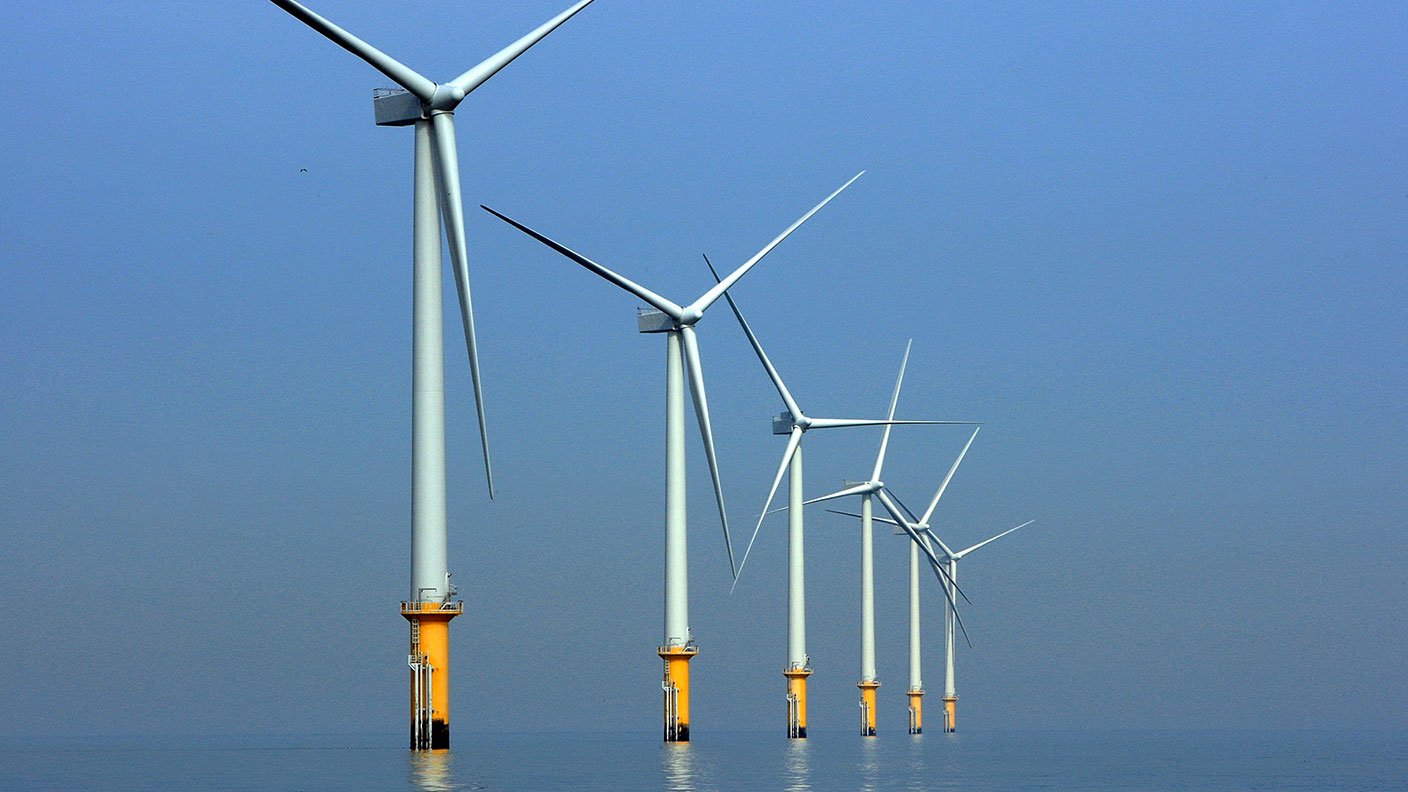Cash in on a profitable end to the oil era
Cheap oil stocks could still make a lot of money and carve out a new future before oil demand peaks


Everybody hates oil stocks. Income seekers are scared by the dividend cuts. Sustainable investors don’t like the pollution. Momentum traders aren’t interested in anything that’s not tech. And everybody else looks at the red ink in recent results and steers clear. So it’s understandable that most of the oil majors – BP, Chevron, ConocoPhillips, Eni, Equinor (formerly Statoil), ExxonMobil, Royal Dutch Shell and Total – are down 40%-60% this year.
With yields of 5% or more even after cuts, these firms look cheap if the oil price recovers once Covid-19 passes. Crude is $40 per barrel now, but was $60-$70 last year, at which point the majors are very profitable. The strongest argument against them is that oil is on its way out faster than expected. BP now forecasts that demand will peak around 2030 and could then drop rapidly. The world would still need some oil, but potential supply would far exceed demand. That would mean low prices, so low-cost sources (eg, Saudi Arabia) might drive out other producers.
This is a very plausible scenario. And yet if the majors respond to the implications, they could still be excellent investments.
MoneyWeek
Subscribe to MoneyWeek today and get your first six magazine issues absolutely FREE

Sign up to Money Morning
Don't miss the latest investment and personal finances news, market analysis, plus money-saving tips with our free twice-daily newsletter
Don't miss the latest investment and personal finances news, market analysis, plus money-saving tips with our free twice-daily newsletter
Dwindling reserves
All these firms have limited reserves, ranging from eight years of production for Shell to 17 for Exxon. If they want to keep producing oil, they must constantly invest in new reserves. And in all the parts of the world that the majors can access, new fields are harder to find and produce than their existing ones. Between 2008 and 2017, the five biggest – BP, Chevron, Exxon, Shell and Total – generated $1.5trn in cash, but reinvested four-fifths of it, according to Bloomberg.
If demand will shrink in a decade, a better strategy may be to stop investing in finding new reserves and run down existing ones to maximise free cash flow (see below) before demand peaks. The cash can be paid out as dividends, invested in new energy – such as offshore wind – or a mix of both.
The European majors appear to be moving in this direction. The US ones – always sceptical about an end to the oil era – are not. It’s possible that both strategies may work out – the last major still pumping oil could earn good returns.
There are risks. Crude might not get back to the $60-$70 range needed to produce lots of cash while running down reserves. Investing in non-oil projects may deliver a poor return. A return to high oil prices could tempt them to resume investing in expensive new fields. But these valuations are pricing in a lot of doubt. Oil majors feel a little like tobacco did in 2000. Out of favour, but with more cash and better prospects than tech-crazed investors think.
I wish I knew what free cash flow was, but I’m too embarrassed to ask
Free cash flow (FCF) measures a firm’s ability to generate spare cash that can be returned to shareholders as dividends or share buybacks, or used to pay down debts. FCF shows how much money is left over after all the costs of doing business and making capital investments.
Free cash flow is important because a business needs to generate excess cash if it’s going to reward investors. If the amount of cash it produces is little more than it needs to survive, it’s not going to be a good long-term investment. In addition, cash flow is harder to fake than accounting profits (net income or earnings per share) so can provide a useful check on whether the company is doing as well as it claims.
How you define FCF depends on whether you are an investor in debt (bonds or loans) or in equity (shares), and whether you want to carry out a more precise calculation or a rough estimate. The most common approach is to take earnings before interest and tax from the income statement, add back depreciation and amortisation (these are non-cash accounting measures that allow for the fact that the value of assets reduce over time), and subtract capital expenditure, changes in working capital and taxes. Alternatively, take cash from operations from the cash flow statement, add back the after-tax cost of interest and subtract capital expenditure.
This gives free cash flow to the firm (FCFF), which is what concerns a debt investor. Equity investors get what’s left over after paying creditors, so they may also look at free cash flow to equity (FCFE), which deducts the after-tax cost of interest and net repayment of debt (be alert for situations where this is being distorted by a big increase in borrowing).
Free cash flow is used in valuation tools such as free cash flow yield (FCF per share ÷ share price), as well as more complex discounted cash flow models. You can also look at profitability metrics such as the free cash flow margin (FCF ÷ sales).
Get the latest financial news, insights and expert analysis from our award-winning MoneyWeek team, to help you understand what really matters when it comes to your finances.
Cris Sholto Heaton is an investment analyst and writer who has been contributing to MoneyWeek since 2006 and was managing editor of the magazine between 2016 and 2018. He is especially interested in international investing, believing many investors still focus too much on their home markets and that it pays to take advantage of all the opportunities the world offers. He often writes about Asian equities, international income and global asset allocation.
Cris began his career in financial services consultancy at PwC and Lane Clark & Peacock, before an abrupt change of direction into oil, gas and energy at Petroleum Economist and Platts and subsequently into investment research and writing. In addition to his articles for MoneyWeek, he also works with a number of asset managers, consultancies and financial information providers.
He holds the Chartered Financial Analyst designation and the Investment Management Certificate, as well as degrees in finance and mathematics. He has also studied acting, film-making and photography, and strongly suspects that an awareness of what makes a compelling story is just as important for understanding markets as any amount of qualifications.
-
 Football fans issued warning over ticket scams ahead of 2026 World Cup
Football fans issued warning over ticket scams ahead of 2026 World CupSantander customers lost more to football scams in the first six months of 2025 compared to the same period in 2024, when total losses surged due to the Euros
-
 Nationwide fined £44 million over “inadequate” anti-money laundering systems
Nationwide fined £44 million over “inadequate” anti-money laundering systemsFailings in Nationwide’s financial crime processes between October 2016 to July 2021 meant one criminal was able to deposit £26 million from fraudulent Covid furlough payments in just eight days.
-
 Who is Christopher Harborne, crypto billionaire and Reform UK’s new mega-donor?
Who is Christopher Harborne, crypto billionaire and Reform UK’s new mega-donor?Christopher Harborne came into the spotlight when it emerged he had given £9 million to Nigel Farage's Reform UK. How did he make his millions?
-
 The best Christmas gifts for your loved ones
The best Christmas gifts for your loved onesWe round up the best Christmas gifts with a touch of luxury to delight, surprise and amaze family and friends this festive season
-
 Leading European companies offer long-term growth prospects
Leading European companies offer long-term growth prospectsOpinion Alexander Darwall, lead portfolio manager, European Opportunities Trust, picks three European companies where he'd put his money
-
 How to harness the power of dividends
How to harness the power of dividendsDividends went out of style in the pandemic. It’s great to see them back, says Rupert Hargreaves
-
 Why Trustpilot is a stock to watch for exposure to the e-commerce market
Why Trustpilot is a stock to watch for exposure to the e-commerce marketTrustpilot has built a defensible position in one of the most critical areas of the internet: the infrastructure of trust, says Jamie Ward
-
 Tetragon Financial: An exotic investment trust producing stellar returns
Tetragon Financial: An exotic investment trust producing stellar returnsTetragon Financial has performed very well, but it won't appeal to most investors – there are clear reasons for the huge discount, says Rupert Hargreaves
-
 How to capitalise on the pessimism around Britain's stock market
How to capitalise on the pessimism around Britain's stock marketOpinion There was little in the Budget to prop up Britain's stock market, but opportunities are hiding in plain sight. Investors should take advantage while they can
-
 London claims victory in the Brexit wars
London claims victory in the Brexit warsOpinion JPMorgan Chase's decision to build a new headquarters in London is a huge vote of confidence and a sign that the City will remain Europe's key financial hub
